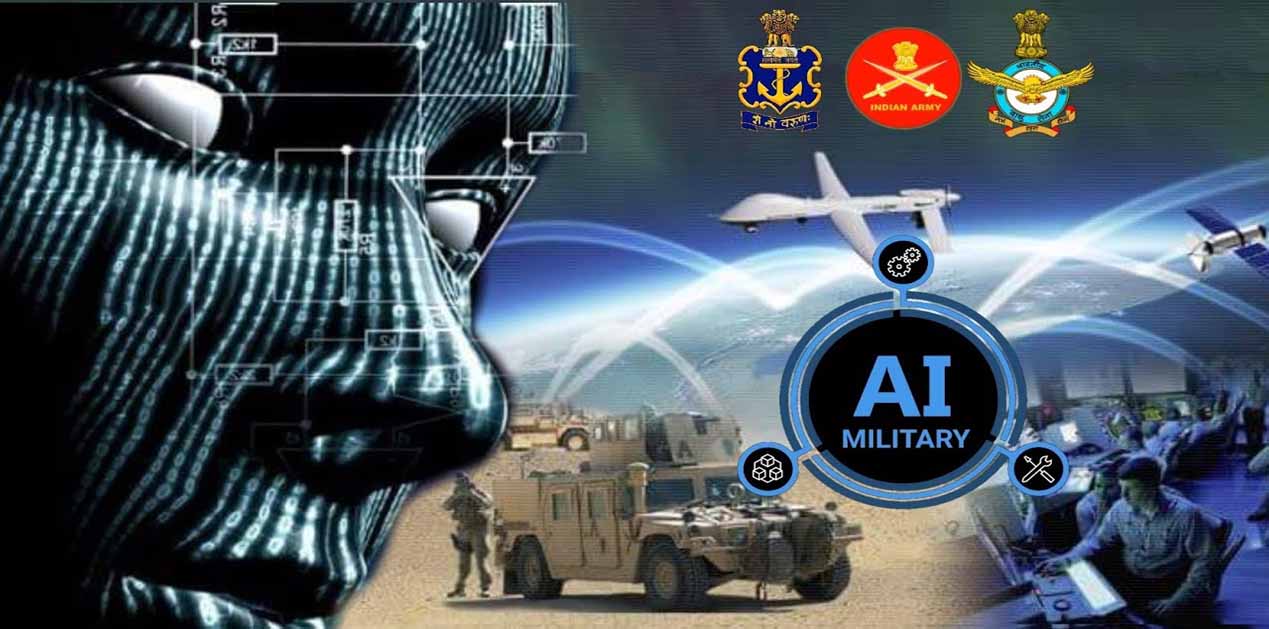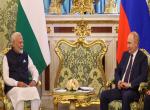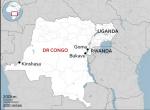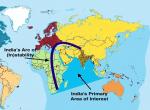Introduction
The professional military body differentiates between an objective nature and a subjective character of war by drawing upon Clausewitz. Nature of war describes what war is and character of war describes how it is actually fought. Nature of war is violent, interactive between opposing wills and fundamentally political. War’s character is influenced by technology, law, ethics, culture, methods of social, political, and military organization and other factors that change across time and place. Character of warfare changes in concert with the tools that become available and how they influence the ways militaries organize themselves to fight wars.
In his book On War, Carl von Clausewitz highlighted how failing to understand the character of war leads to disaster. He chastised Prussian generals for using the old tactics of Frederick the Great against a Napoleonic army waging a new type of warfare. They had not appreciated the changes in how war was being fought or in the character of war. Future development and deployment of human-machine teams and autonomous weapons systems represents such a shift in the character of war.1
In near future we will see significant advances in autonomy and machine learning, to include the emergence of robots working together in groups and as swarms. New and powerful robotic systems will be used to perform complex actions, make autonomous decisions, deliver lethal force, provide intelligence, surveillance, and reconnaissance, coverage and speed response times over wider areas of the globe. Military organizations must plan now for this new era of warfare. Governments must be prepared for the political, strategic and ethical dimensions of this shift in the character of war.2
Major technological breakthroughs that could occur in robotics as well as information, cognitive, and material sciences are, by themselves, truly revolutionary. Military applications of Artificial Intelligence (AI) have the potential to change the very nature of war. At the strategic level, this could affect how the armed forces organize ground forces, how it fights and what types of major weapon systems it will need. At the operational and tactical levels, enemy’s AI capabilities could dictate specific weapon systems design, the development of new types of units to address his AI capabilities and how brigade to squad level units conduct tactical operations. 3
Today, we are at a major inflection point, one in which technology is reshaping the way wars are fought. The future of warfare will be shaped by the role of smaller drones; robots on the battlefield, offensive cyberwar capabilities, extraordinary surveillance capabilities both on the battlefield and of particular individuals, greater reliance on special operations forces operating in non-conventional conflicts and militarization of the space.
There is an argument that AI has the potential to go beyond shaping the character of war and change the nature of war itself because wars will be fought by robotic systems, not people. AI has the potential to engage in planning and decision making that were previously human endeavours. U.S. Defense Secretary James Mattis speculated in February 2018 that AI is “fundamentally different” in ways that raise questions about the nature of war. The character of warfare will clearly change, and these changes could significantly influence the Clausewitzan elements that frame our understanding of war’s nature.
No one is arguing that warfare is not changing. Where people disagree is whether the nature of warfare, the character of warfare, or both are changing. An analysis is done in this paper whether AI will change the nature and character of warfare.
AI and the Character of War
The character of warfare changes in concert with the tools that become available and how they influence the ways militaries organize themselves to fight wars. AI systems have the potential to increase the speed with which countries can fight. Even if humans are still making final decisions about the use of lethal force, fighting at machine speed can dramatically increase the pace of operations.
There are several military applications of AI currently in development or are at early stages. The neural networks can utilize imagery databases and classify particular scenes (such as a mountain), allows for a more accurate assessment of specific locations. The processing power that is possible with narrow AI systems has the potential to increase the speed of data analysis. Image recognition can achieve faster, more accurate results than humans can achieve today.
Gen. Mark Milley, Chief of Staff for the U.S. Army, says the character of war is changing in real time and the US Army is trying to keep up with it. Milley said, “The character of war, though, gets to how you fight, with what weapons you fight, what terrain you fight on, the doctrine you fight with, how you do leader development, how you organize yourselves to fight. The character of war is changing very significantly,” AI and machine learning can also help in that information gathering and decision-making process. The private sector is just now beginning to explore what its capabilities are and the military is watching closely. “How fast artificial intelligence comes upon us as a society across the world, and how that gets adapted to use in military operations, I think, will have a fundamental impact. It’s too early to tell right this minute, but it’s fast approaching”, Milley said. He said experts are torn on just how fast. Some say it’s 5-10 years out, some say 50, and still others say it’s more than a century away. It doesn’t matter how far out it is; what matters is that it’s coming, and it benefits us to get there first.
Successful implementation of AI might lead to new concepts of operation that could influence force structure and force employment, or how militaries organize themselves and plan operations. One possibility is the use of large numbers of smaller platforms, known as swarms, for military operations. Algorithms and control systems designed to enable ‘swarming’ already exist in the private sector and in academia. Expensive, high quality platforms could become vulnerable to swarms of sensors and lower-cost weapons platforms that are effectively networked together. AI could thus help bring quantity back into the equation in the form of large numbers of robotic systems.
Another potential application for AI that could shape the character of war is coordination through layers of algorithms that work together to help manage complex operations like expert systems. AI could accelerate trends that challenge these long running force structure imperatives, such as the need to defeat adversaries with advanced anti access, area denial (A2/AD) networks with tolerable costs.
Two Schools of Thought
There are two schools of thought. One feels that nature of war is not changing. The other finds that with the rapid development of AI the nature and character of warfare are definitely changing.
Opinion-Nature of war is not changing:
“The nature of war is immutable.” –Lt Gen Van Riper
“The essential nature of war has not changed, is not changing, and will never change ..” - Lt Gen Dubik
“The nature of warfare and conflict between nations and states is fundamentally unchanging… However, the character of warfare is changing just as societies, political entities and technologies change.” – Vice Admiral Cebrowski.
Military professionals swear by the one of today’s most sacred mantras by the Prussian Clausewitz: The character of war is changing, but the nature of war is not. Pro-Clausewitzans believe war, by its nature, is violent, chaotic and prone to escalation. This has always been and will always be the case. Colin Gray has written, "Many people confuse the nature of war with its character. The former is universal and eternal and does not alter, whereas the latter is always in flux." But does it mean that nature of war is eternal and unchanging? Clausewitz himself seemed less sure about this than many of his followers”. He further writes, "Clausewitz, for once, is less than crystal clear. The great Prussian wrote, confusingly, that ‘the nature of war is complex and changeable.’"4
People from this school of thought remain extremely skeptical that war’s objective nature can be modified. Traditionalists say, war has always been violent, chaotic, destructive, and murderous – and will thus always be so. They contend war is inherently human, a clash of wills, politically driven. Technology cannot mitigate its essence or shed reliable insights to remove its uncertainty. Historian Williamson Murray is skeptical the Information Age can dissipate war’s nature, especially battlefield uncertainty. He contends that war’s nature includes the fog and the friction of war, and that the arguments contending its nature can be altered are false. 5 Murray argues, “No amount of computing power can anticipate the varied moves and the implications of an enemy’s capacity to adapt in unexpected ways.”6
The claim that has been made many times in the past is that AI and other technologies will enable military commanders to have “a qualitatively unsurpassed level of situational awareness and understanding heretofore unavailable to strategic commanders”. This has not happened. The chaos of war, its fog, friction, and chance will likely never be deciphered, regardless of what technology is thrown at it. As long as humans are responsible for directing war, for writing code, and for fielding and maintaining machines, warfare will remain an instrument of policy to be made by warriors. How can AI, deep learning, autonomous systems work with or without humans to achieve the military objectives that create the conditions ultimately required for a political resolution of conflict? Those warriors may have machine augmentation, delegate decisions to cyber assistants and operate more remotely; but they will be directing the fight. While AI-enabled technologies will be able to gather, assess and deliver heretofore unimaginable amounts of data, these technologies will remain vulnerable to age old practices of denial, deception and camouflage.
Brad D. Williams, in an introduction to an interview he conducted with Amir Husain, asserts, “Generals and military theorists have sought to characterize the nature of war for millennia, and for long periods of time, warfare doesn’t dramatically change. But, occasionally, new methods for conducting war cause a fundamental reconsideration of its very nature and implications.” Williams then cites “cavalry, the rifled musket and Blitzkrieg as three historical examples”7
Franz-Stefan Gady argues that in today’s tech-crazed world, where many of us see technological solutions as a panacea to just about anything, defense analysts have a tendency to overestimate the impact of technological changes and new innovations on warfare.8 Regardless of the tools of warfare, they remain tools. While they will be the primary tools of the warfighter, the decision to enable the warfighter to employ those tools will come from political leaders bent on achieving a certain goal with military force. The violence of warfare will never change.9
All the modern armed forces face the same challenge. In spite of spending billions in upgrading existing capabilities, very few of these platforms were designed to seamlessly integrate AI or partner with autonomous robotic systems. This means retro-fitting is required, making emergent technology an integration problem. Culturally, it is also likely to take significant time and effort for the armed forces to adapt entrenched command and control approaches to absorb the shock generated by the introduction of artificial intelligence and autonomous systems.10 Advanced militaries have to be careful to avoid a situation where military technical determinism guides strategic thinking. Technological superiority does not guarantee military success. Sun Tzu warned, “tactics without strategy is the noise before defeat.” Technology without integration, or a conceptual underpinning, is the hype before the letdown. Technology enables tactical actions to advance a strategy — but technology cannot replace tactics. Artificially intelligent, autonomous machines are almost certain to create new integration challenges. AI is likely to be among the greatest military integration challenges due to the additional complexities it creates for network architectures.
Despite some rapid advances in AI development it is estimated that it could take until 2060-2070 for it to reach the level of maturity required to satisfy many imagined military purposes. While this should not prevent militaries from taking heed of artificial intelligence’s potential applications, it also should not distract from resolving urgent force modernization challenges like network capacity and combat system integration.11
Opinion – Nature of War is Changing:
The most significant elements of war, violence, human factors, fog and friction and chance, will always remain. War’s essence as politically directed violence will remain its most enduring aspect, even if more machines are involved at every level. As technology advances at rapid pace the nature and character of war will be changed. In the upcoming military revolution of autonomy, we will have to consider new sources of combat power and assess how they impact each level of war.12 Autonomy will change the nature of war in several ways. These are:
- It could weaken the role of political direction by forcing response delegation to lower echelons for faster forms of attack.
- Autonomy can lessen the ability of governments to gain the support and legitimacy of their populations, while making it easier for foreign governments to manipulate their adversary’s populations.
- Deep learning forms of AI will augment the intuition and judgment of experienced commanders.
- Automated technologies could reduce popular support for professional military institutions, which paradoxically could free governments to employ force more readily since the political consequences are reduced.
- As with the earlier ages, friction and uncertainty will endure.
- The age of autonomy can introduce new forms of friction while reducing human factors in tactical contexts.13
The nature of war has definitely changed since the Cold War; globalization, violent non-state actors, identity wars, non-trinitarian (irregular) wars, and Information Technology (IT) has fundamentally altered nature of war. Anti-Clausewitzans believe that Clausewitz’s theories are passé, not having kept up with revolutionary technological and social changes. The new thinkers argue that capabilities in robotics, AI, and human-machine teaming will change more than just the way warfare is waged. As US Deputy Secretary of Defense, Bob Work identified AI and human performance enhancements as potential breakthroughs in defense technology: “We believe we are at an inflection point at artificial intelligence and autonomy.” He later told an AI conference, “I am starting to believe very, very deeply that it is also going to change the nature of war.” 14
Technology has started changing lot of fundamentals of warfare. The lethality of modern weapons has emptied out the battlefield. What can be ‘seen’ by sensors of diverse types can be targeted by increasingly precise direct and indirect fires. AI has the potential to sharply enhance defense, continuing to empty out the battlefield and turning it into a no-man’s zone where automated systems and semi-autonomous devices wage attrition warfare. The Russo-Ukraine war in the Donbas hints that in future wars between state based military forces, tactical units will need to remain unseen to survive and that they will now ‘occupy’ territory principally through long-range firepower. If both sides have intelligent machines, war may become simply a case of machines being violent to other machines.
Drone crews firing missiles at insurgents from 3,000 miles away or navies blockading countries and starving their people into submission do not experience war the same as those infantry soldiers did years ago. The experience of violence in some wars has become one sided, while wars are now increasingly waged against civilians well behind any defensive front lines. If a nation’s borders cannot be penetrated and its critical centers of gravity attacked using kinetic means, perhaps non-kinetic means are the offensive style of the future. In that case war’s changing nature comes into play.
Application of information warfare by strategic competitors against the US political system hints at new cyber techniques that AI may greatly enhance. Instead of destroying another’s capabilities and national infrastructures, they might be exploited and used as bearers to spread confusion and dissent amongst the populace. In this century, starvation may not be necessary to collapse a nation; AI may offer more effective methods. War may no longer be violent and murderous but it may still be as Clausewitz wrote a “true political instrument.”15
Over the years, Ex-US Secretary of Defense Jim Mattis, an avid reader of military history and theory, has cultivated a reputation for deep thinking about the nature of warfare. He came to a few conclusions about what he calls the “fundamental” nature of combat. He said, “It’s equipment, technology, courage, competence, integration of capabilities, fear, cowardice — all these things mixed together into a very fundamentally unpredictable fundamental nature of war. The fundamental nature of war is almost like H20, ok? You know what it is.” However his opinion about change in nature of war has changed. He said, “I’m certainly questioning my original premise that the fundamental nature of war will not change. You’ve got to question that now. I just don’t have the answers yet”. Mattis further said, “The character of war changes all the time. An old dead German [Carl von Clausewitz] called it a ‘chameleon.’ It changes to adapt to its time, to the technology, to the terrain, all these things”. As Mattis put it, “If we ever get to the point where it’s completely on automatic pilot and we’re all spectators, then it’s no longer serving a political purpose. And conflict is a social problem that needs social solutions.” 16
But should the technology develop the way it is expected to, removing a man from the loop could allow machine warfare to be fully unleashed. Mattis and his successors will have to grapple with the question of whether AI so radically changes everything that war itself may not resemble what it has been for the entirety of human history.
Present Status
At the present state of development AI technologies are immature. Modern unmanned aircraft in service can operate autonomously, but cannot yet execute the sorts of complex missions that manned equivalents can achieve. Land robots are clumsy on uneven terrain. Concepts fail to deliver significant breakthroughs in autonomous decision making. There is considerable wariness that the hype and publicity surrounding deep learning will not pan out as dramatic breakthroughs.
The present developments of AI technologies in military domain has not reached the level when it can be said that it would change the nature of war. In fact, it is in a nascent state of development. However the scenario is changing fast. Despite best efforts, no nation-state can ever be fully prepared for the character of the next war. As such, potential military applications of emergent technology should not be viewed as a panacea for the chaos, friction, and chance that will continue to define war in the future. Regardless of the possibilities offered by technological advances, success in the next conflict is likely to be just as reliant on human genius. 17
References
- From a Clausewitzan perspective, that war is human fundamentally defines its nature. Carl von Clausewitz, On War, trans. Michael Howard and Peter Paret (Princeton, NJ: Princeton University Press, 1989).
- Joint Force Development, Joint Operating Environment JOE 2035: The Joint Force in a Contested and Disordered World (Suffolk, VA: Joint Chiefs of Staff, 2016).
- See CRS Report R45178, Artificial Intelligence and National Security, by Daniel S. Hoadley and Nathan J. Lucas and Peter Singer; “Getting to Grips with Military Robots,” The Economist, January 25, 2018; and Aaron Mehta, “AI Makes Mattis Question Fundamental Beliefs About War,” C4ISRnet.com, February 17, 2018.
- Colin Gray, Modern Strategy (New York: Oxford University Press, 1999).
- Admiral William A. Owens, Lifting the Fog of War, with Edward Offley (New York: Farrar,Straus, and Giroux, 2000).
- Williamson Murray, America and the Future of War: The Past as Prologue (Stanford, CA: Hoover Institution Press, 2017).
- John All en, Amir Hussain, “On Hyper-War,” Fortuna’s Corner, July 10, 2017,
- Franz-Stefan Gady, 'The Fog of Peace': Why We Are Not Able to Predict Military Power
February 04, 2015, available at : https://thediplomat.com/2015/02/the-fog-of-peace-why-we-are-not-able-to-predict-military-power/ - https://fortunascorner.com/2017/07/10/on-hyper-war-by-gen-ret-john-allenusmc-mirhussain/ General John R. Allen, US Marine Corps (Retired) and Amir Husain, On Hyperwar, available at :
https://www.usni.org/magazines/proceedings/2017-07/hyperwar - F. G. Hoffman, Will War’s Nature Change in the Seventh Military Revolution?, Parameters 47(4) Winter 2017–18.
- Mark Gilchrist, Emergent Technology, Military Advantage, and the Character of Future War, July 26, 2018, available at : https://www.realcleardefense.com/articles/2018/07/26/ emergent_ technology _military _advantage_and_the_character_of_future_war_113655.html
- F. G. Hoffman, Will War’s Nature Change in the Seventh Military Revolution?, Parameters 47(4) Winter 2017–18, available at :https://ssi.armywarcollege.edu/pubs/parameters/issues/Winter_2017-18/5_Hoffman.pdf
- Kareem Ayoub and Kenneth Payne, "Strategy in the Age of Artificial Intelligence," Journal of Strategic Studies 39, no. 5-6(2016): 793-819, https://doi.org/10.1080/01402390.2015.1088838
- Sydney J. Freedberg Jr., “War without Fear: DepSecDef Work on How AI Changes Conflict,” Breaking Defense, May 31, 2017.
- “The Tenth Man” — War’s Changing Nature in an AI World, October 15, 2018, Available at : http://madsciblog.tradoc.army.mil/90-the-tenth-man-wars-changing-nature-in-an-ai-world/
- Aaron Mehta, AI makes Mattis question ‘fundamental’ beliefs about war, February 17, 2018, available at : https://www.c4isrnet.com/intel-geoint/2018/02/17/ai-makes-mattis-question-fundamental-beliefs-about-war/
- Maj Gen P K Mallick, VSM, Artificial Intelligence In Armed Forces- An Analysis, CLAWS Journal, Winter 2018.
Image Source: https://i.ytimg.com/vi/CbjWQ5gBE2s/maxresdefault.jpg











Post new comment